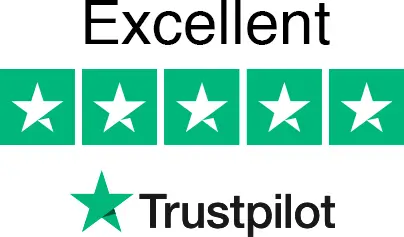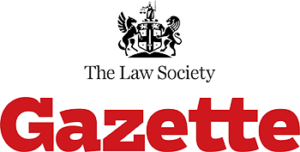Key Takeaways
- Protected characteristics are clearly defined under UK law to shield individuals from workplace discrimination and unfair treatment in society.
- The Equality Act 2010 specifies nine protected characteristics: age, disability, gender reassignment, marriage or civil partnership, pregnancy and maternity, race, religion or belief, sex, and sexual orientation.
- Misunderstanding these definitions exposes businesses to discrimination claims, legal disputes, and reputational risk.
- Not every trait is protected—knowing the difference prevents costly compliance errors.
- Real-life examples of direct and indirect discrimination demonstrate how these protections work practically.
- Employers must consider protected characteristics at every stage, from recruitment to daily management.
- Positive action is permitted to support underrepresented groups, but decisions must be objectively justified and compliant with UK law.
- Clear, actionable steps exist if you face or witness discrimination, including using grievance processes or legal templates.
- Our AI-powered template builder provides lawyer-drafted, Equality Act-compliant documents, minimising legal danger for your business.
- Go-Legal AI is rated Excellent on Trustpilot with over 170 five-star reviews from real users.
What Are Protected Characteristics? (UK Definition & Source)
Unsure which staff traits must be legally protected or anxious about falling foul of discrimination law? Every employer, HR professional, and startup founder faces this challenge—and missteps often lead to legal claims, expensive settlements, or brand damage. A clear understanding of your legal obligations under the Equality Act 2010 is essential for hiring, policy-making, and daily operations.
Protected characteristics, defined in the Equality Act, are specific aspects of identity the law shields from discrimination. These cover age, race, disability, sexual orientation, and more—safeguarding fair treatment in work and wider society.
Protected Characteristics Definition: Clarity Under UK Law
Protected characteristics are entrenched in UK law by the Equality Act 2010. The Act names nine traits or personal attributes that must not become grounds for less favourable treatment by employers, service providers, or educational institutions. These characteristics are legally mandated to be protected—whether the discrimination is direct or indirect, deliberate or accidental.
A protected characteristic means an aspect of personal identity—such as sex, disability, religion, or age—recognised by UK law as needing explicit legal protection. Treating someone unfairly because of any of these traits is usually unlawful except in rare, strictly defined exceptions.
If you’re updating contracts or policies, our smart review tool helps you identify and remedy risks before they become legal liabilities.
The Full List of Protected Characteristics: The Equality Act 2010 Explained
The Equality Act 2010 lists nine protected characteristics, all of which must be accounted for in workplace decisions and business practices. Here’s a practical summary:
- Age – Safeguards against discrimination targeting any age group, young or old.
- Disability – Covers physical or mental impairments with a substantial and long-term effect on daily life.
- Gender reassignment – Protects people who are undergoing, have undergone, or plan to undergo gender transition.
- Marriage and civil partnership – Applies to legally married people and civil partners (primarily in employment).
- Pregnancy and maternity – Protects women during pregnancy and after childbirth from unfair treatment.
- Race – Encompasses colour, nationality, and ethnic or national origins.
- Religion or belief – Includes recognised religions, philosophical beliefs, and non-belief.
- Sex – Protects both men and women from gender-based discrimination.
- Sexual orientation – Covers attraction to the same, opposite, or both sexes.
Real-Life Examples: How Protected Characteristics Affect Business Decisions
Applying the protected characteristics definition can be challenging without clear real-world scenarios. The following examples illustrate how equality law works in practical terms:
- Age: “Urban Web Solutions” refuses to promote under-30s, wrongly assuming they lack experience. This is direct age discrimination.
- Disability: A co-working space does not provide accessible toilets, barring wheelchair users. This failure to make reasonable adjustments is unlawful.
- Religion or belief: “High Street Finance Ltd” schedules compulsory meetings during Eid, disregarding employees’ religious observances. This may amount to indirect discrimination.
- Sexual orientation: Homophobic remarks in team meetings, unaddressed by management, create a hostile environment and constitute harassment.
- Pregnancy and maternity: Cutting shifts for an employee returning from maternity leave, rather than supporting their reintegration, can trigger a discrimination claim.
What Is Not a Protected Characteristic? Clearing Up Common Confusion
Not every difference or trait benefits from protection under the Equality Act 2010. Many employers get this wrong, assuming their legal obligations are broader than they actually are. Knowing what isn’t protected helps prevent both unlawful treatment and misdirected resources.
Common traits NOT covered as protected characteristics:
- Personality type (e.g., introvert vs. extrovert)
- General appearance (unless related to a recognised characteristic such as disability or race)
- Employment status (unless linked to another protected category)
- Political allegiance (except where it meets strict philosophical belief criteria)
- Income or social class
Types of Discrimination Under the Equality Act: Direct, Indirect, Harassment, Victimisation
Understanding the different kinds of discrimination is crucial for ensuring real compliance—not just ticking boxes. The law recognises several actionable forms:
Direct Discrimination
This happens when someone is treated less favourably because of a protected characteristic.
Indirect Discrimination
A company-wide rule or policy, neutral on the surface, puts those with a specific protected characteristic at an unfair disadvantage.
Harassment
Unwanted conduct related to a protected characteristic which creates an intimidating, hostile, or humiliating workplace.
Victimisation
Treating someone badly because they’ve complained about discrimination or supported someone else’s complaint.
| Discrimination Type | What It Involves | Example |
|---|---|---|
| Direct | Less favourable treatment because of a characteristic | Not hiring due to disability |
| Indirect | Policy disadvantages a protected group | Ban on head coverings |
| Harassment | Offensive or humiliating conduct | Sexual jokes at work |
| Victimisation | Detriment for raising a complaint | Demotion after a grievance |
Essential Employer Duties and Employee Rights: Protected Characteristics in the Workplace
Employers operating in England and Wales have core legal responsibilities to protect the nine characteristics, while workers are guaranteed robust rights under the Equality Act.
Employer Duties
- Eliminate Discrimination: Draft and enforce an up-to-date anti-discrimination policy, covering every protected characteristic.
- Promote Inclusion: Take proactive steps—like making reasonable adjustments for disabled staff and respecting all faiths.
- Fair Treatment: Apply recruitment, rewards, discipline, and progression policies consistently.
- Address Grievances: Handle every complaint promptly, thoroughly, and without retaliation.
Employee Rights
- The right not to be discriminated against for a protected characteristic.
- The right to reasonable adjustments for disability.
- The right to challenge discrimination—internally through HR or externally through tribunals.
- The right to protection from retaliation after raising concerns.
Protected vs. Non-Protected Traits: Why the Difference Is Critical
Failing to distinguish between legally protected and non-protected traits can either invite claims or waste your business’s resources on the wrong issues. Only employees or customers with a protected characteristic under the Equality Act can bring a formal legal claim for discrimination.
| Trait | Protected? | Can You Claim Under the Equality Act? |
|---|---|---|
| Age | Yes | Yes |
| Driving skill | No | No |
| Sexual orientation | Yes | Yes |
| Favourite sport | No | No |
Equality Act Compliance Checklist: Are You Meeting Your Duties?
Quickly audit your policies with this Equality Act checklist:
| Characteristic | Legal Definition | Example in Practice |
|---|---|---|
| Age | Particular age group | Excluding older applicants |
| Disability | Physical or mental impairment | No wheelchair access in office |
| Gender reassignment | Transitioning or transitioned gender | Blocked promotions for transitioning staff |
| Marriage/civil partnership | Being married/in a partnership | Perks denied to unmarried staff |
| Pregnancy/maternity | Pregnancy or recent birth | Reduced shifts after maternity |
| Race | Colour, ethnicity, nationality, origin | Recruitment wording that excludes certain backgrounds |
| Religion/belief | Religious or philosophical belief | No allowance for prayer times |
| Sex | Male or female | Unjustified pay differences |
| Sexual orientation | Sexual preference | Harassment over orientation |
Actions for Different Roles:
- Individuals: Raise concerns with HR, document issues, and use designated grievance processes.
- Employers/HR: Review all core policies for direct and indirect risks at least once a year.
- Service Providers: Ensure customer policies and premises are inclusive and accessible.
Step-by-Step: What To Do If You Face or Witness Discrimination
Clear steps exist for both individuals and organisations if discrimination is suspected:
If You’re an Individual
- Record Events: Capture dates, times, parties involved, and outcomes.
- Review Policies: Find your company’s equality policies and grievance procedures.
- Raise Concern Informally: Approach a trusted manager or HR where possible.
- Escalate Formally: Use your employer’s formal grievance channels if needed.
- Get Advice: Contact Citizen’s Advice, Acas, or use our on-demand AI legal support for tailored guidance.
- Consider Legal Action: Where unresolved, claims can be filed with an employment tribunal within 3 months.
If You’re an Employer or HR
- Investigate Quickly: Treat the complaint impartially and take confidential statements.
- Act Promptly: Take interim measures to protect affected staff if necessary.
- Make Decisions and Amend Policies: Address the concern, communicate outcomes transparently, and adjust rules as needed.
- Document Every Step: Log your actions for legal protection.
- Provide Further Training: If the matter reveals gaps, deliver targeted staff training.
For Service Providers
- Acknowledge and Investigate: Respond swiftly to any discrimination allegations.
- Apply Reasonable Adjustments: Immediately address any practical barriers, especially for disabled service users.
- Review and Update Practices: Remove or revise any exclusionary procedures.
Positive Action & Objective Justification: How Employers Stay Compliant
Employers can support underrepresented groups or maintain fair workplace policies by relying on two key concepts—positive action and objective justification. Both must be handled carefully to remain lawful.
Positive Action
You may encourage applications from underrepresented groups or provide support such as training or mentoring, provided this does not turn into unlawful positive discrimination.
Objective Justification
Some policies may indirectly disadvantage a protected group but are justified if:
- There is a legitimate business aim (such as safety, efficiency, or welfare),
- The policy is proportionate (goes no further than is needed).
⚡ Get legal tasks done quickly
Create documents, follow step-by-step guides, and get instant support — all in one simple platform.
🧠 AI legal copilot
📄 5000+ templates
🔒 GDPR-compliant & secure
🏅 Backed by Innovate UK & Oxford
How Go-Legal AI Streamlines Compliance with the Equality Act
Ensuring your business policies, contracts, and internal practices comply with protected characteristics law can feel complex and time-consuming. Go-Legal AI is designed to remove uncertainty and reduce legal risk, so you can focus on running your business.
With our platform you can:
- Audit Your Policies Instantly: Scan HR, recruitment, and service documents for compliance gaps using powerful legal AI.
- Create Compliant Templates: Build inclusive, Equality Act-compliant contracts, job adverts, and public policies in minutes.
- Get Step-By-Step Guidance: Our interactive platform walks you through each element you need.
- Access Expertly Written Templates: All templates are reviewed by legal experts specialising in UK business law.
- Stay Current: Receive live updates whenever UK equality law changes.
Frequently Asked Questions
How many protected characteristics are there in the UK?
There are nine, as set out in the Equality Act 2010.
Is pregnancy or maternity always protected?
Yes. Legal protection begins at pregnancy and remains throughout maternity leave and related periods.
Can employers ask about protected characteristics during hiring?
Only if required for genuine positive action or to make reasonable adjustments for disability. Otherwise, such questions can be unlawful.
What does “objective justification” mean?
This is when employers must prove an indirectly discriminatory policy is necessary for a legitimate purpose and is proportionate—not excessive.
What are real examples of discrimination?
Rejecting disabled job applicants, only promoting men, or refusing religious accommodations are all examples under the Equality Act.
Are there exceptions to the rules?
Some limited exceptions apply, like genuine occupational requirements (for example, hiring only women for a women’s shelter).
How do I report discrimination at work?
Use your company’s grievance procedure or approach HR. If there’s no resolution, you can bring a claim to an employment tribunal within three months.
Must small businesses comply?
Yes. The Equality Act applies to employers of every size, though implementation may differ for smaller organisations.
Create Your Equality & Diversity Policy Today
Every UK business needs an Equality and Diversity Policy that reflects the law on protected characteristics. Our platform provides:
- Compliant templates: Drafted and quality-checked by legal professionals, always up to date.
- Clause explanations: So you understand what each section means and why it matters.
- Risk flags: Automated alerts for any gaps in your draft policy or contracts.
Build a Legally Robust Policy With Go-Legal AI
Mastering the protected characteristics definition and how it applies to your business is fundamental for legal protection and modern workplace culture. This guide has provided practical examples and strategic advice so you can meet your duty of care, avoid costly mistakes, and create a fair, truly inclusive environment.
Leave the guesswork in the past—use our step-by-step platform for smart, up-to-date, and lawyer-approved policy creation. Start for free today and protect your team and business with documents you can trust.










































